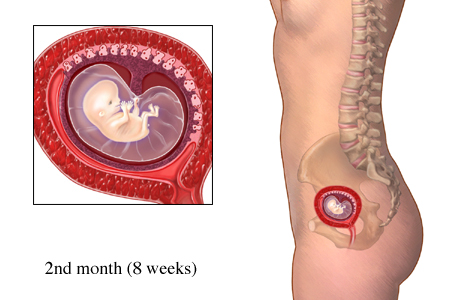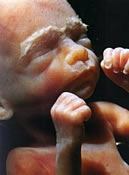Introduction
In any society, the continuation of the human species or generations is a compulsory factor, which all humans must endeavor to achieve; a factor that depends on women’s ability to give birth. In this regard, the childbearing is one of the greatest abilities that any female must have. Although many may argue that, scientifically, there exist other sophisticated methods of childbearing, it is important to, note that societies value the common way of women carrying babies in their wombs for nine months hence, to some extent determining the kind of respect societies accord them.
Pregnancy is a procedural process, which commences immediately after conception to the time that the resulting embryo is out of the mammalian womb. All through this period, the fertilized egg undergoes a series of fetal development steps; something that is accompanied with numerous changes, when it comes to the mother’s physical outlook, emotional, social, and psychological state.
Pregnancy
Primarily, this involves a mother’s ability to carry a developing fetus in her womb, a process that takes nine months in normal health life scenarios. That is, the mother may carry the fetus in more or less days depending on the prevailing conditions, which depend on the mother’s prevailing emotional, psychological, social, environmental, and above all the health status. Medically, the counting of this period commences immediately after the commencement of the initial menstrual stage, to the time the fetus will be out of the womb. In most women, the missing of one or more menstrual cycles is a clear indication of commencement of this period, a fact that may be wrong, due to the menstrual abnormalities, which may occur (Marieb pp. 1002-1008 and Shriver Para. 1-3).
Due to inaccuracies associated with the menstrual missing concept, as a way of determining whether one is pregnant, there exist other medically proven methods of ascertaining pregnancy primarily using urine samples. This can be an important step for any female, because it marks a period in life when females have to be cautious with any form of lifestyle they adopt. Apart from the test, there exist other primary indicators of pregnancy, which include queasiness, tiredness, frequent urinations, headaches, changes in eating patterns, mood swings, and in some cases, morning sickness. It is important to note that, sometimes pregnancy may have many-associated risk factors, a fact that depends on the mother’s age, adopted lifestyles, and health status (Riley pp. 21-25). Other medical signs, which may act as indicators of pregnancy include, signs of the human chorionic gonadotropin; primarily in urine and sometimes blood, elevated basal body temperatures, darkening of the birth canal; commonly called the Chardwick’s symptom. Additional signs include the Hegar’s sign; causes tendering of the uterus isthmus, and in some women, changes may occur on the vaginal sections of the cervix (E-Medicine p. 1).
The entire process commences immediately after conception, a biological process, which occurs in the fallopian tubes. The concept of commencement of pregnancy is an issue of debate, because of the divided definition of its onset. Medically, the entire process commences immediately after implantation, a fact that contradicts what majority of individuals suppose; immediately after conception. The entire process has to undergo a series of steps, which march with different developments as far the embryo’s body is concerned. The onset of the embryo formation commences in the initiation stage, because of merging of the gamete cells of a male and female; spermatozoa and oocyte, as a result of coitus. Although this is the case, it is important to note that, there exist other scientific methods of achieving the same namely artificial insemination and in-vitro fertilization (applicable in most case of sterility). Other important periods of pregnancy include pre and postnatal period, although the latter is after childbirth (Eddleman and Stone pp. 24-55).
Fetal Development Stages
Fetal development is a complex biological process that involves a series of developmental steps primarily grouped in three trimesters. Development in each trimester takes a specific number of weeks whereby, at each specific time, the embryo will develop specific bodily functional units. Such trimester divisions depend on three crucial developmental stages of the fetus that include conception, embryonic development, and fetal development (Riley pp. 24-27)
To start with, the first division runs for a time span of fourteen weeks, something that commences primarily after implantation. At conception, the male and female gamete union takes place, hence marking the onset of the pregnancy period. In normal circumstances, implantation takes place in the uterus, although sometimes such a process may occur in the fallopian tubes or other areas outside the uterus; a health condition called ectopic pregnancy. Division of the fertilized egg follows fertilization hence, leading to development of the blastocyst. By the end of the third week, major body organs for example the gastrointestinal tract, brain, heart, and spinal cord will appear. Appearance of the leg buds and arm growths is associated with the fourth and fifth week. In addition, this time span marks the formation of the placenta, eyes, ears and working of the heartbeat. Throughout the seventh week, the eyebrows, hair and nipple follicles, tongue, and toes start to appear, in addition to the clear signs of body parts organization. By the eight week, the body parts assemblage is almost over; the baby size is almost 2 inches, whereby, the heart is working and signs of movements are clear (American Pregnancy Association p.1).

As the child development process enters the third month and partial forth month (week nine to thirteen), the size of the fetus increases gradually. In addition, signs of genital and teeth buds development are clear in this period.
The onset of the fourteenth week marks a crucial period in the development process, as the child is developing external organs, which include the skin (the second trimester). Throughout the 14th to the 16th week of a fetus gestation period, signs of hair formation; lanugo, are clear, with the fetus exhibiting some form of amniotic fluid swallowing signs. Other developments in this stage include fingerprints, intestinal tract, sweat glands, and discharges from the liver and pancreas. Throughout the seventeenth to the twentieth week, baby motion signs are prevalent, in addition to development of fingers, toes, eyebrows, and lashes. In addition, there is development of a baby coating layer; vernix, stethoscope detectable heartbeat, and an increase in the baby’s length; 8 inches. By the end of the twenty-sixth week, the sleeping and walking cycle are in place; lung air sacs are developing, the nervous system is working to some extent hence, reducing chances of the baby dying incase premature delivery takes place (American Pregnancy Association p.1.)

The third trimester commences in the twenty-seventh week, a stage that is associated with rapid growth of the baby size; from the 14 inches in the twenty-sixth week, to 21 inches in the fortieth week. By the thirty-second week of the baby gestational age; twenty-fifth week of the fetal age, there exist clear indications of breathing movements by the lungs, in addition to the tender and supple formed bones. Other changes throughout this period include the opening of the eyelids, which remained closed in the previous trimester.
Throughout the thirty-three to the thirty-sixth week; gestation age, the position of the fetus changes; assumes an upside position, hence acting as an indication of the pending delivery. In addition, there is rapid increase in weight and size; approximately six and a quarter and nineteen lbs and inches respectively. By the thirty-seventh to the fortieth week, anything is possible as concerns delivery. Minimal fetal movements, development of breast buds, fingernails, weight and length gain, (approximately ten lbs twenty-one inches respectively) and maturation of other essential organs mark this period (Riley pp. 312-335)
Effects of Pregnancy on the Mother
The many biological and physical changes that take place in the mother have many effects that may be social, psychological, or emotional. In addition, pregnancy has many associated health problems depending on the prevailing conditions. Primary psychological effects relate to one’s self-worth, body shape changes, and in some cases depression primarily as concerns self-will. Medical researchers attribute these psychological problems to the ever-irregular hormonal variations. These effects manifest themselves in form of elevated anxiety levels, ecstasy, disgust, hallucinations, irritability, and mood swings. Pregnancy has also some social effects on the mother, something that occurs most in teen mothers. This is because; socially, it is a disgrace to the society for one to be pregnant out of matrimony. Stigmatization may lead to unwanted abortions, confusion, or even death to pregnant mothers (Riley 48-56).
Pregnancy also has many health problems, which in many ways impair a mother’s proper functioning. These problems include exaggerated pains; more so pelvic and backache, incontinence; associated with bladder control problems, stomach crump, queasiness, deep vein thrombosis, morning sickness, and nose bleeds. In addition, research studies also show that, some mothers can develop pregnancy blood pressure anomalies (pre-eclampsia) and Haemorrhoids, conditions that is treatable (National Health Service p.1).
Conclusion
In conclusion, considering the importance of the childbearing process and the delicate nature of the entire process, it is important for mothers to ensure they adopt good lifestyles accompanied with continuous exercises. This is because negative influences to the development process have not only adverse effects to the developing child, but also to the mother.
Works Cited
American Pregnancy Association. Fetal development. 2010. Web.
Eddleman, Keith and Stone, Joanne. The pregnancy bible: your complete guide to pregnancy and early parenthood. E-Medicine. Pregnancy symptoms. E-medicine Health: WebMD. 2010. Web.
Marieb, Elaine. Human anatomy and physiology (7th e.d.). California: Benjamin Cummings, 2006. Print.
National Health Service. Common health problems during pregnancy. NHS. 2010. Web.
Riley, Laura. Pregnancy: the Ultimate week-by-week pregnancy guide. Des Moines, Iowa: Meredith Books, 2006. Web.
Shriver, Kennedy. Pregnancy. National Institute of Child Development and Care, 2010. Web.
Stutter Health. Fetal development- month 2. Stutter Health. 2010. Web.